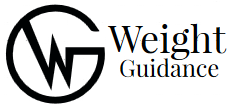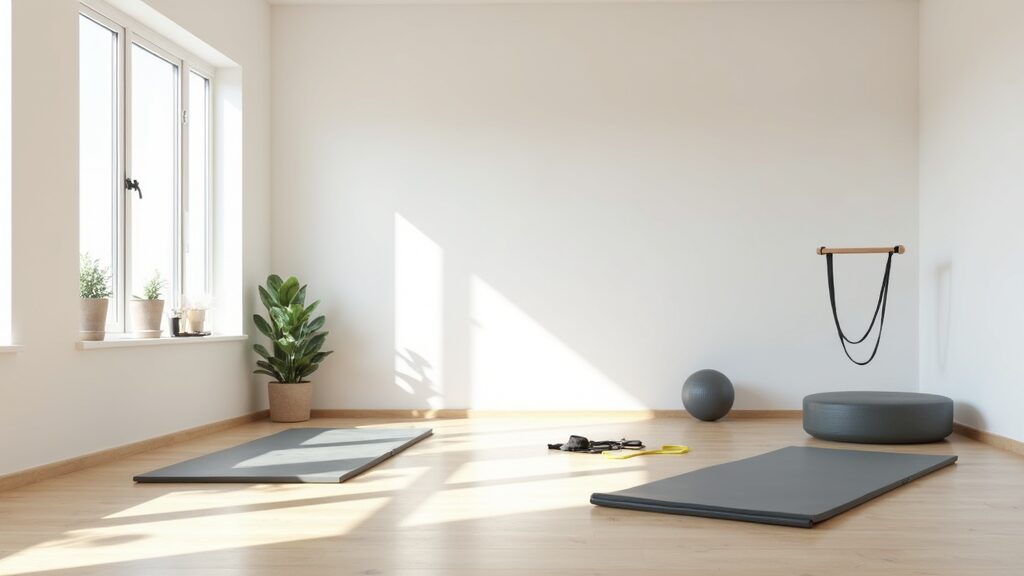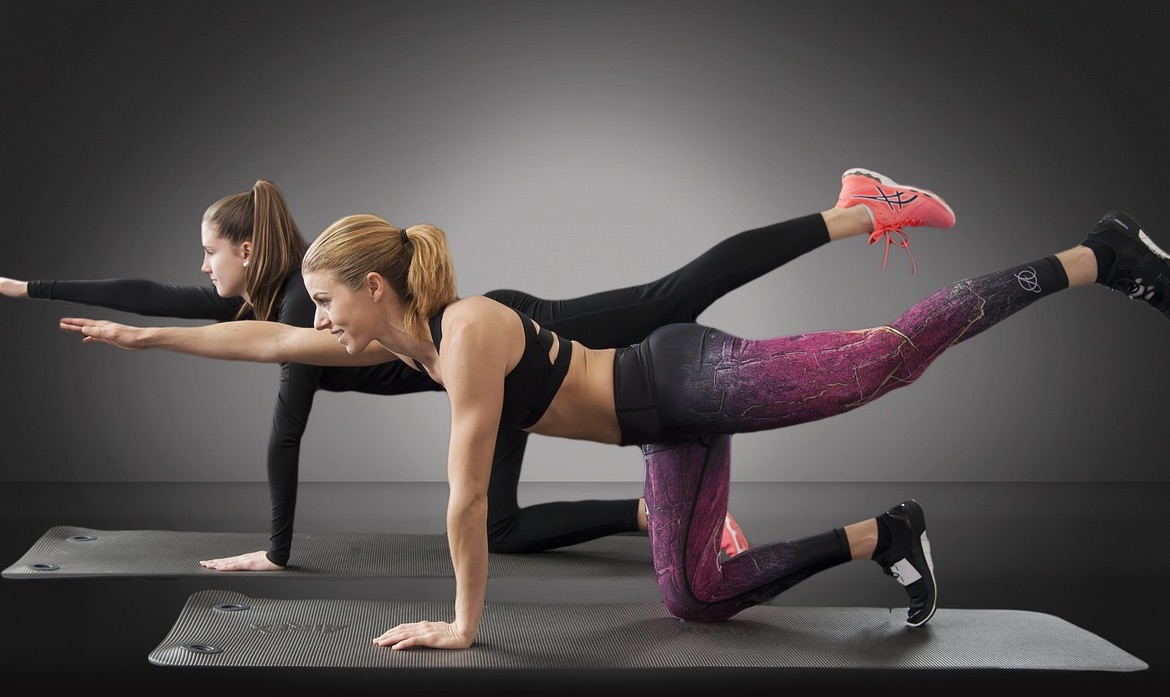Pilates has become one of my go-to fitness methods for building a strong, balanced body. It puts a huge focus on the core, which is much more than just your abs; it’s the power center that supports your posture, movement, and overall stability. I’m going to walk you through the essentials of Pilates core exercises and share practical details for anyone interested in getting started or taking their routine to the next level.
Table of Contents
- TL;DR on Pilates Core Exercises
- How to Find Your Core in Pilates
- Can You Strengthen Your Core with Pilates?
- What 5 Pilates Exercises Make Up the Abdominal Series?
- Pilates Core Exercises Worth Trying
- Fun Facts about Pilates Core Training
- Recommended Products That Pair Well with Pilates Core Workouts
- Summary
- Frequently Asked Questions
- Conclusion
TL;DR on Pilates Core Exercises
If you’re in a hurry: Pilates core exercises focus on strengthening the muscles around your midsection, including your abdominals, obliques, lower back, and hips. These moves help improve posture, flexibility, and overall strength. Most people can safely do Pilates, and it’s super useful for building a solid foundation whether you’re new to fitness or looking to challenge yourself.
How to Find Your Core in Pilates
One of the first things I learned in Pilates was how to actually find and activate my “core.” In Pilates, the core is often described as the “powerhouse,” which includes your abs, lower back, hips, and pelvic floor. When I hear teachers say “draw your navel to your spine” or “zip up through your center,” it’s about tightening those muscles without holding your breath or bracing so hard that everything tenses up.
To find your core in Pilates, I usually start with pelvic tilts lying on my back; knees bent, feet flat on the floor. I gently tilt my pelvis so my lower back presses into the ground, and then release. As I do this, I focus on feeling those deep abdominal muscles (not just the six-pack abs) tighten up. Another trick is exhaling as I pull my belly in, like I’m zipping up a tight pair of jeans. With practice, I’ve gotten much better at knowing when my core is engaged and when I’m just faking it. Even a simple move like standing tall and drawing my ribs gently down can remind me to turn on my core.
Over time, learning to engage my core through daily activities—like walking, carrying bags, or even while sitting at my desk—has made a noticeable difference. Mindful engagement is what sets Pilates apart, and it’s the reason so many people swear by it for long-term, functional strength.
Can You Strengthen Your Core with Pilates?
Absolutely. Pilates is pretty much famous for core strength. It doesn’t just work the outer abs but also the deeper muscles. Think transverse abdominis, obliques, and those small stabilizers that protect your spine. I noticed my posture improved after a few weeks, and even regular activities like lifting groceries or sitting at my desk became less tiresome.
Consistency is key, and you don’t need to do hourlong workouts every day. Even 10–20 minutes a few times a week can make a difference. Pilates movements like “Hundred” and “Single Leg Stretch” pack a lot of work into a small amount of time. Plus, strengthening your core can help relieve lower back pain and give your performance a boost in lots of other workouts. So it pays off in everyday life and whatever sports or activities you’re into.
Pilates encourages quality over quantity. So while holding moves longer or doing more reps gives results, being intentional with each breath and movement matters just as much. It’s all about control, not maxing out or moving too fast.
What 5 Pilates Exercises Make Up the Abdominal Series?
The Ab Series, sometimes called the “Series of Five,” is a staple in Pilates mat classes. I turn to this series when I want a quick, focused burn that leaves my abs shaking—in a good way. Here are the five classic moves, with a quick description for each:
- Single Leg Stretch: Lying on your back, bring one knee into your chest while the other leg extends out. Switch legs in a controlled, fluid motion. This targets the upper and lower abs.
- Double Leg Stretch: Both knees come into your chest as you hug your shins, then extend your arms and legs out in opposite directions on an inhale. Hug everything back in on the exhale. Your entire core works hard to keep your lower back glued to the mat.
- Single Straight Leg Stretch (Scissors): Reach one leg up toward the ceiling, grab behind your calf or thigh, and gently pull it closer as the other leg drops toward the floor. Switch legs, keeping your core pulled in.
- Double Straight Leg Stretch: Both legs stretch straight up. Lower them slowly toward the mat, then lift back up, always keeping your abs engaged and back protected.
- CrissCross: Like a Pilates twist on the traditional bicycle crunch. With your hands behind your head, bring one elbow toward the opposite knee as you extend the other leg. Alternate sides using smooth, controlled movements.
I try to go slow and focus on form rather than speed. That way, the right muscles fire up and I avoid pulling on my neck or straining my lower back. Even just a couple of rounds will have your ab muscles talking. To make it more fun, challenge yourself by mixing up the tempo or pausing at the hardest part of each move.
Pilates Core Exercises Worth Trying
Here are a few more Pilates moves I find really effective for core strength, whether you’re using a mat at home or practicing at the studio:
- The Hundred: This is a classic warm-up where you pump your arms by your sides and hold your legs in a tabletop or extended position. It wakes up the whole core and gets your breath going. Try to work up to 100 pumps, but even half that is a solid challenge when you’re starting out.
- Rolling Like a Ball: A fun move that massages your spine and requires you to stabilize with your abs as you rock back and forth. It’s a great way to work on spinal flexibility and balance at the same time.
- Plank Variations: From forearm to side planks, these moves build endurance in your core and shoulders. For extra intensity, try lifting one leg at a time or reaching an arm forward.
- Swimming: Lying on your stomach, you alternate lifting opposite arms and legs. It’s great for targeting your lower back muscles and balance. This move helps balance out all the ab work by giving your backside a turn to work hard.
You can do most of these exercises using just a mat. For extra challenge, I like using small props like Pilates rings or light resistance bands, which add variety and a new next-level cool kind of burn. If you want even more options, foam rollers and small weighted balls are awesome additions to rotate into your sessions.
Fun Facts about Pilates Core Training
- Pilates was created by Joseph Pilates in the early 20th century and was originally called “Contrology.”
- The core in Pilates is often called the “powerhouse” because so many movements start from this center.
- Breathwork is super important in Pilates; not just for relaxation but for activating deep muscles.
- Pilates is gentle enough for most people to start, but can get super challenging with advanced variations or added props. No two classes need to be the same, so boredom is rarely an issue.
- Pilates is now practiced all over the world, and you can find classes online, in gyms, or at specialized studios. The versatility of Pilates is a big reason for its popularity.
Recommended Products That Pair Well with Pilates Core Workouts
- Manduka Pro Yoga and Pilates Mat – A thick, nonslip mat makes floor work way more comfortable.
- URBNFit Pilates Ring – The ring adds resistance to core exercises and helps target inner thighs and arms. It’s portable and easy to stash at home.
- Gaiam Resistance Bands – Perfect for giving a boost to basic moves. Different strengths let you switch things up as you get stronger.
- TheraBand Stability Ball – Incorporating a ball can intensify core work and help with balance. It’s great for beginners and advanced practitioners alike.
- “The Pilates Body” by Brooke Siler – One of my favorite books for home practice, with clear illustrations and instructions. It’s a userfriendly guide for anyone new to the method or wanting to deepen their knowledge.
Summary
Pilates core exercises are a reliable way to build strength, stability, and balance. They’re accessible for beginners and can be taken up a notch for advanced movers. When I added Pilates to my weekly routine, I noticed more support in my back, better posture, and improved athletic performance. The Ab Series and classic moves like the Hundred should be on everyone’s radar if you want a strong, functional core. Don’t forget to listen to your body, and remember: a little consistency goes a long way.
Frequently Asked Questions
Question: How often should I do Pilates core exercises?
Answer: 2–4 times a week is a solid target. Your core needs time to recover, just like any other muscle group. Try alternating Pilates days with cardio or other strength work for a well-rounded program.
Question: Do I need equipment to get started?
Answer: No special equipment is required; just a mat and some comfy clothes. Props like rings and resistance bands are great for variety as you progress. And remember, your body weight is often enough for a killer core workout.
Question: Can Pilates help with lower back pain?
Answer: Yes, if you follow good form and move carefully. A strong core can support and relieve lower back tension, but always check with a medical professional if you have chronic back issues. Pilates is frequently recommended as a gentle, safe option for many people dealing with mild back discomfort.
Question: Is Pilates only for women?
Answer: Not at all. Pilates is for everyone; men and women of any fitness level can benefit from stronger core muscles. Actually, many athletes and sports teams now mix in Pilates to boost performance and prevent injuries.
Conclusion
Adding Pilates core exercises to your fitness routine can really give a boost to your strength and overall wellness. Pilates can work for anyone; just focus on quality movement and consistency. If you’re new, start with the basics and build up over time. Your posture, back, and even your mood will thank you. You might even stumble upon a newfound confidence as you get stronger from the inside out.



